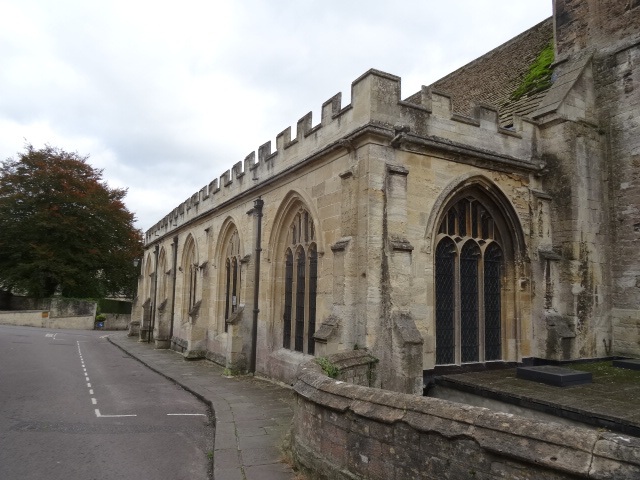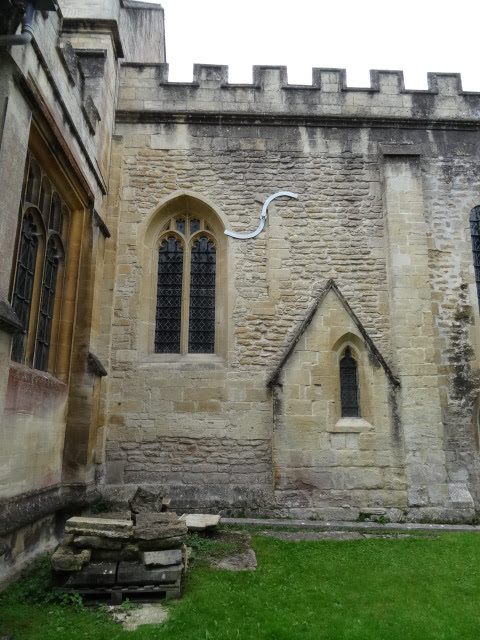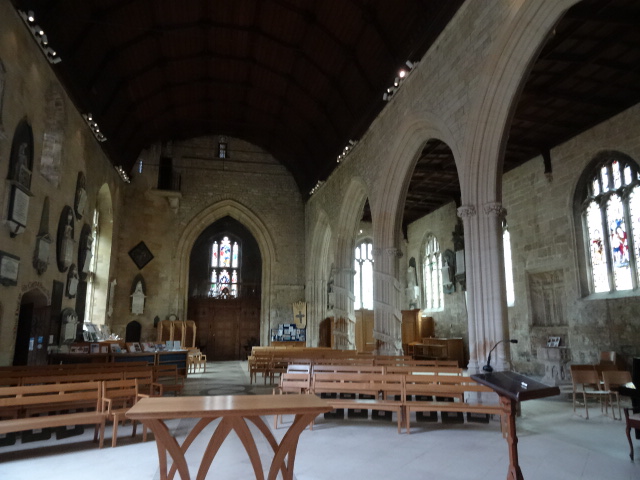The churches of St Laurence and Holy Trinity sit low down by the river Avon and are separated from each other by the seriously attractive Church St. The churches could almost hold hands they are so close. That first visit in all an intense experience. The beauty almost too good to be true. I'd like to think that in the deep past when the church of St Laurence formed part of an Anglo-Saxon monastic complex founded by St Aldhelm it shared space with the predecessor of Holy Trinity; and that at the ending of the monastery the umbilical link between both churches was severed, St Laurence was secularised and Holy Trinity, being the parish church was rebuilt and enlarged so that now it is by far the larger of the two buildings. Alas, that may be wishful thinking, things being a little more complicated than they first appear.
Holy Trinity stands on the north side of a long, thin lens of churchyard separating the church from the river; to the north it stands hard against Church St. There is a business-like west tower with blunt spire, a north aisle which is rather fine, but there is no corresponding aisle on the south (not matter what Pevsner implies in the Wiltshire edition of 'The Buildings of England'). The contrast between north and south sides couldn't be more telling or more interesting, for the north is in all a piece, competent Late Gothic, and south, though obviously rebuilt, is a palimpsest of styles, with projecting porch and transeptal chapel. In origin that S nave wall must be Norman (see the windows).
The interior is surprisingly spacious but, rather like the tower, it's business-like. Not a place for the numinous. Sad to say. I'd even go so far as to say it is somewhat forgettable. What I do remember are the large number of memorials in the church, the grandest being in the chancel - some in need of a clean. And there is the n aisle arcade. It is is mainly Victorian - those scrolls! Originally the aisle was divided into chapels by solid walls, so the effect now is very different from that intended. According to Pevsner the arcade is the work of [John Elkington] Gill (never heard of him) and dates from 1864. Previously in 1858 the great Sir George Gilbert Scott himself had been called in an advisory role. The Vicar of Bradford at the time was William Henry Jones, 1817-1885. He was also an antiquary and it was he who discovered the church of St Lawrence hidden in plain sight as it were among later buildings. His brother was Samuel Flood Jones who was a member of the Chapter of Westminster Abbey.
In writing this post I began to suspect that the church had undergone a Tractarian restoration at that time, influenced by such restorations undertaken in the weaving communities of the Cotswolds particularly by Tom Keble, vicar of Bisley and brother of John Keble. However the current re-ordering has been so radical that it was hard to tell from my photographs what had happened way back in the midst of the nineteenth century. It was only via an internet search that I found evidence of what was done and what was lost in the process. Judging by what I found that restoration was a pretty thorough-going process, just as radical in its way as what has recently occurred, with the destruction of a west gallery and organ and the removal of two interesting looking post-Reformation plaster ceilings. Both nave and chancel now have attractive wooden barrel vaults that deserve to be coloured and gilded. So perhaps no great loss. About the aesthetic and spiritual qualities of the current thorough-going re-ordering the least said the better, but what the hell. My heart lies with with the previous states of the church. It could be argued that the current re-ordering is just another example of a series of discontinuities that the church has suffered. And that is true but it cannot be used as a justification for such far reaching changes; neither is it an excuse for something quite so banal.














No comments:
Post a Comment